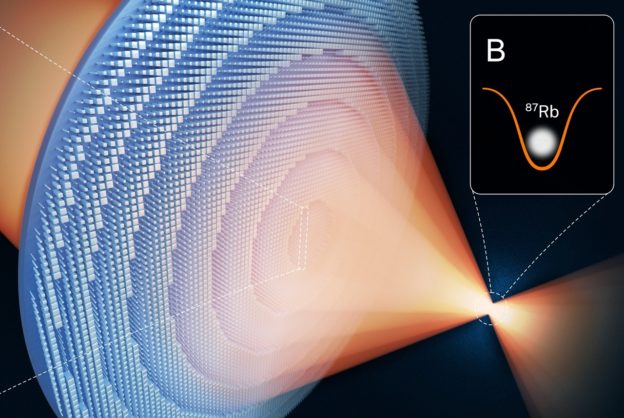
Atoms are known to be difficult to control and vibrate even near absolute zero, but scientists still need to try to capture and manipulate single atoms in order for devices such as atomic clocks or quantum computers to function properly. Recently, a team from the National Institute of Standards and Technology (NIST) has designed a new optical tweezer with millions of tiny pillars embedded on the surface. Further expansion of the device will be able to capture hundreds of single atoms at the same time.
Observing and manipulating individual atoms is tricky, and the invention of the laser in the 1960s made it possible to use the radiation pressure of light to trap particles and even living bacteria. In 1986, Arthur Ashkin developed a tool “optical tweezers (also called optical tweezers)” that uses laser beams as chopsticks to “grab” atoms, for which he won the 2018 Nobel Prize in Physics.
If individual atoms could be controlled within large arrays, they could become tiny discrete units of information, performing computations at speeds much faster than the fastest supercomputers, but in the past, optical tweezers were unable to image atoms in vacuum-operated microscope systems. Scientists at the National Institute of Standards and Technology (NIST) and JILA have developed a new optical tweezer that addresses these issues.
The new optical tweezers use a piece of 4mm glass etched with millions of tiny silicon pillars hundreds of nanometers high to form a metasurface. “Wavelets,” which combine or “interfere” with each other concentrate energy at a specific location—the location of the atoms to be trapped. By hitting the metasurface with laser light at different angles, the wavelets can be focused to different points, where atoms will be trapped.
In the test, the team captured nine rubidium atoms, and each atom was trapped on the surface for about 10 seconds, enough to study the quantum mechanical properties of the particles and use them to store quantum information; the metasurface structure can also work in reverse, collecting the atoms emitted by them. light and direct it to an external camera used to image the atoms.
In addition, polarized light guided by tiny lenses can cause atomic spins — quantum properties similar to Earth’s rotation on its axis but pointed in a specific direction, the researchers say. The new optical tweezers could in the future scale up or combine multiple metasurface work, giving them the opportunity Capture and manipulate hundreds of atoms at once for quantum computers.
The new paper is published in the journal PRX Quantum.
(Source of the first image: NIST)
Further reading:

New technological knowledge, updated from time to time

